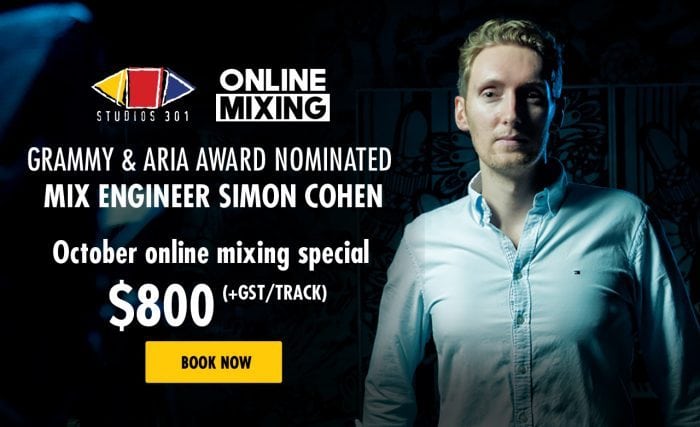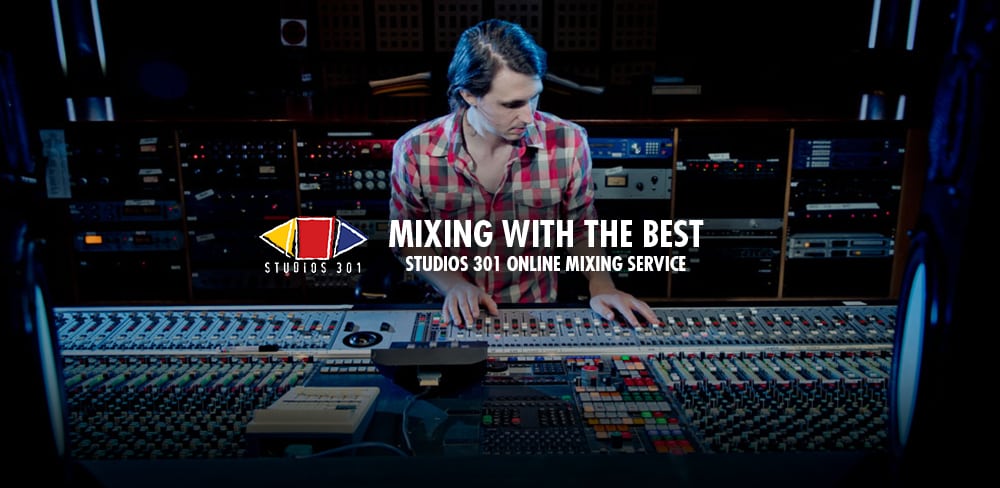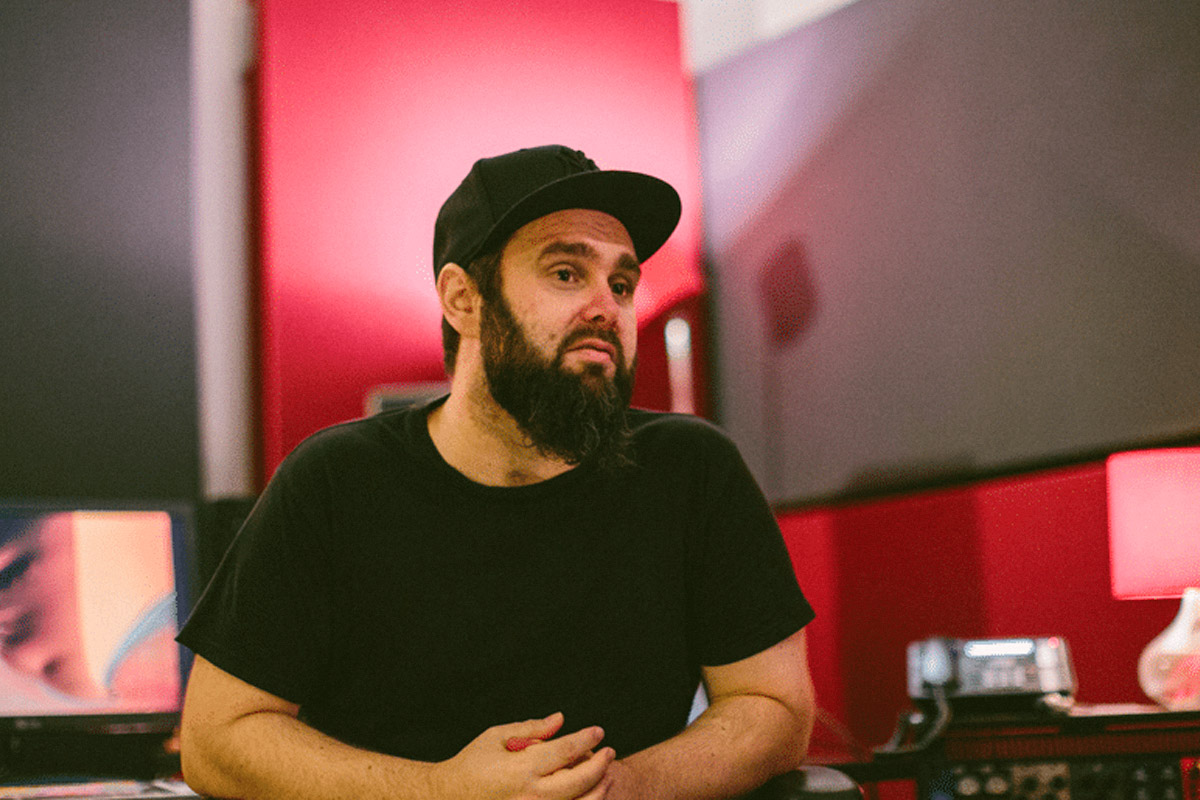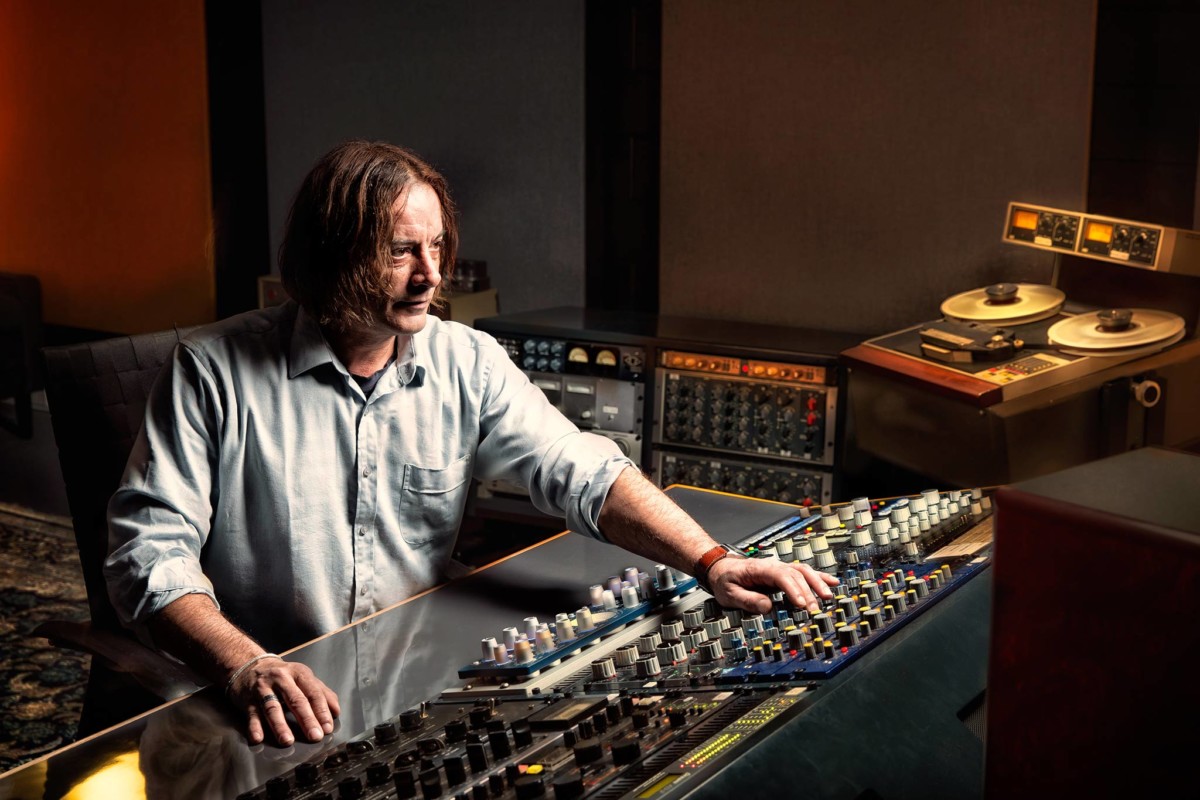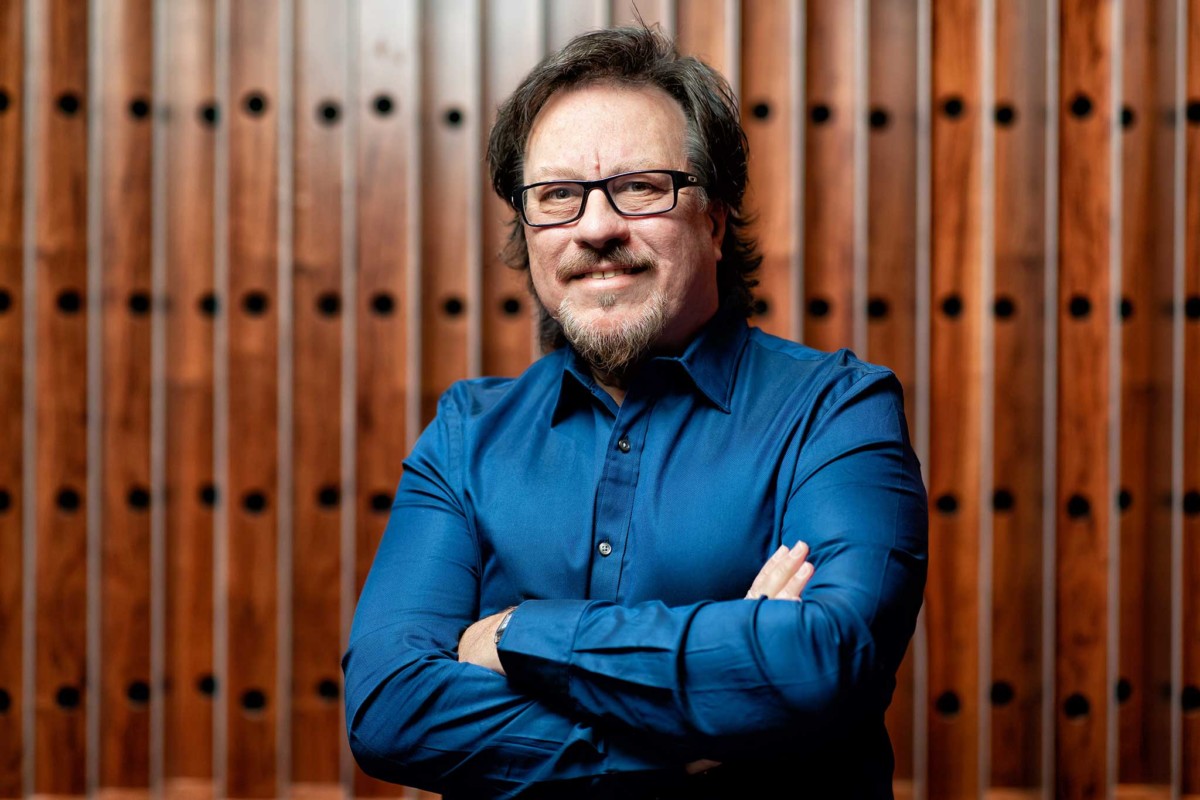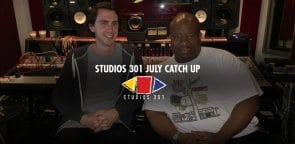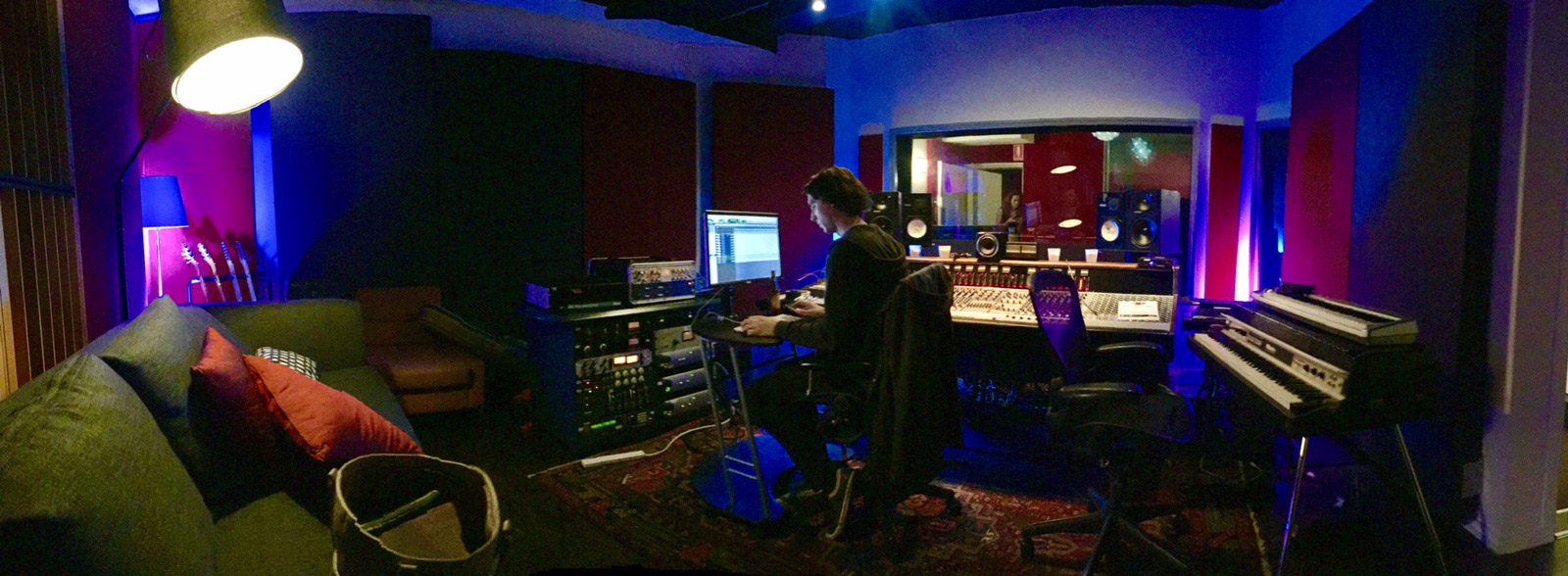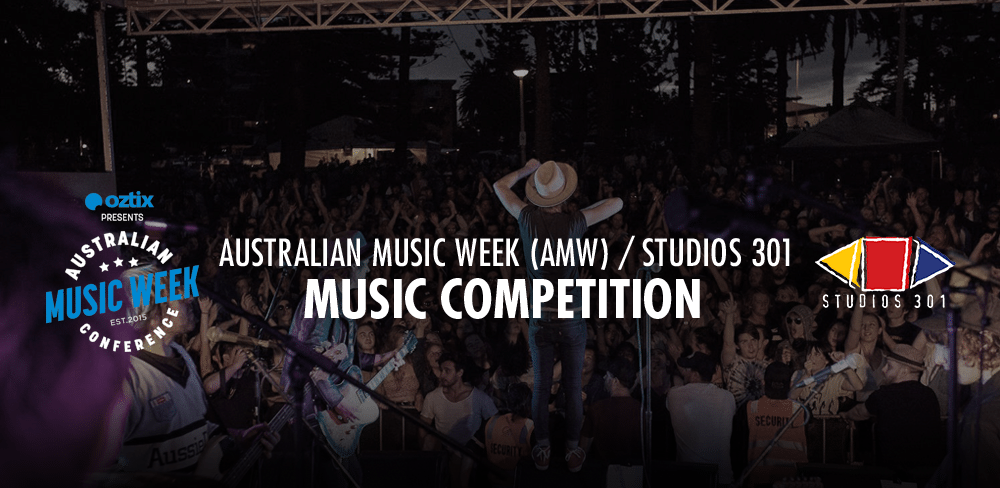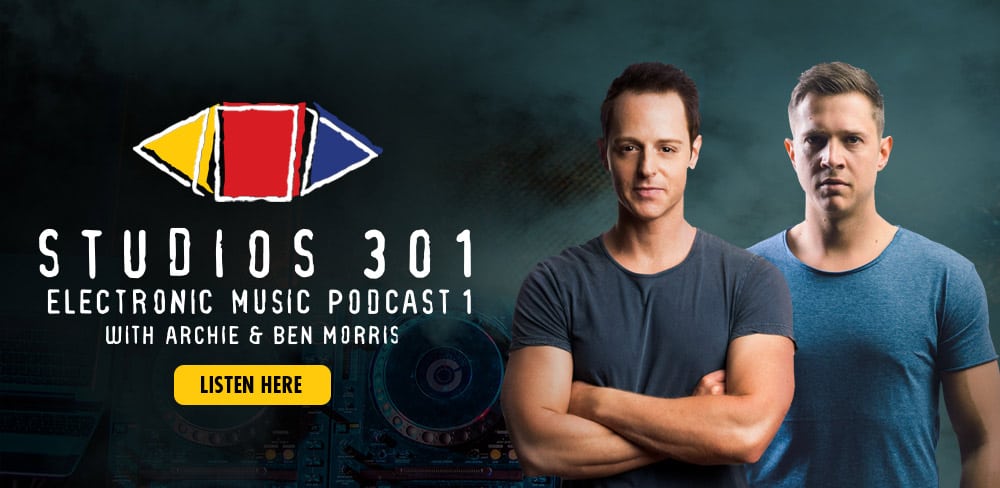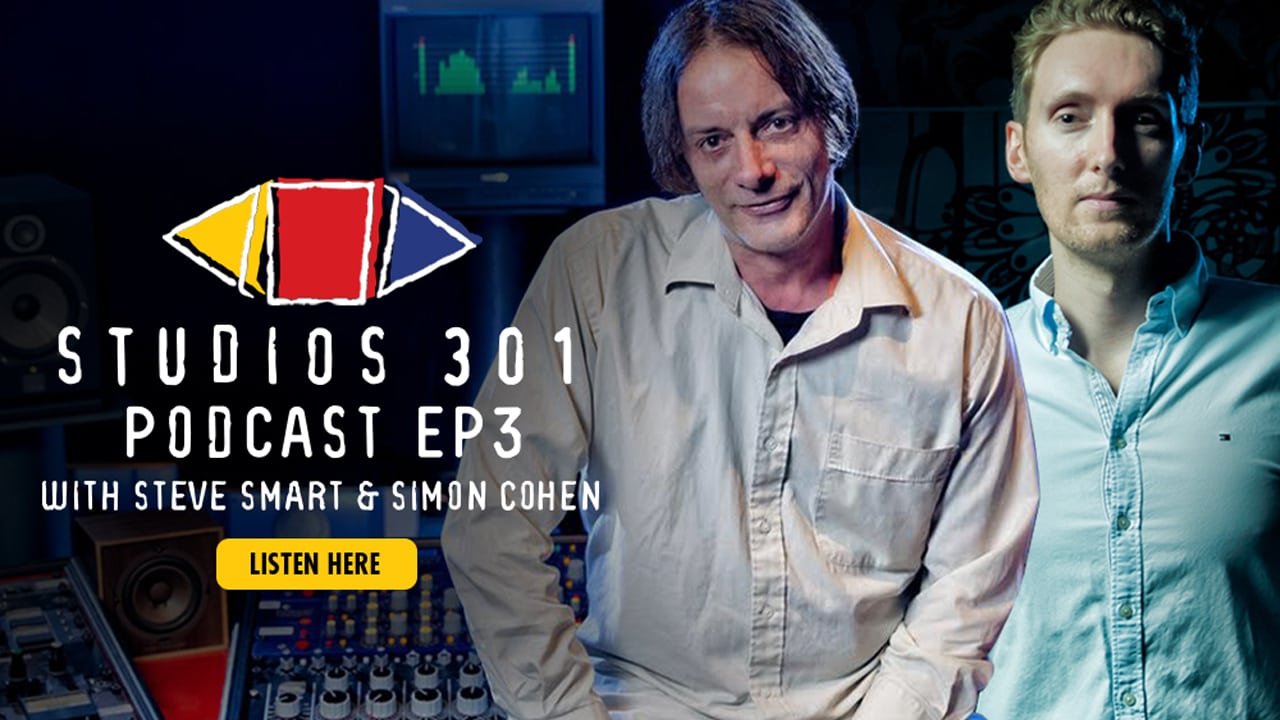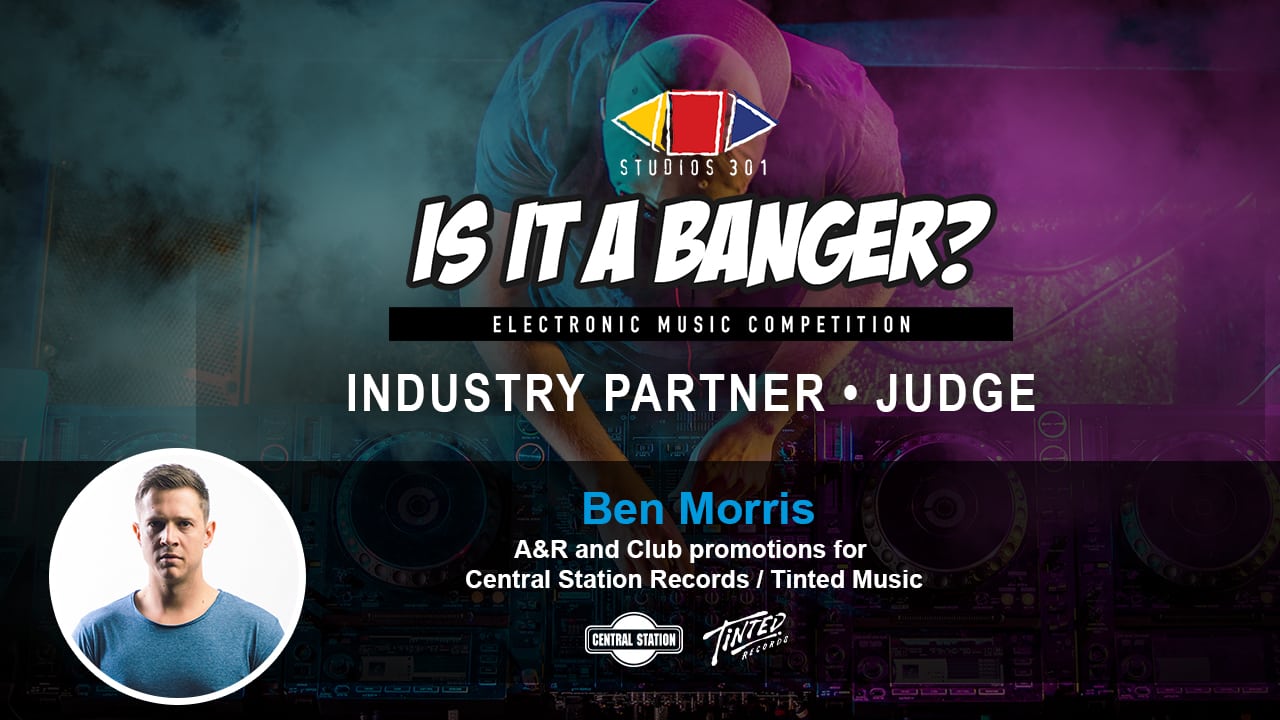The Studios 301 Podcast E04 A Archie and Ben Morris: Central Station
Hi and welcome to The Studios 301 Podcast where we chat with staff and friends at the studio about their recent sessions, studio insights and advice for aspiring engineers and producers.
Simon: Hey, and welcome to this episode. This week we have Ben and Archie from Central Station and we will be talking a little bit about moving away a little bit from the rock world and the pop world and perhaps moving a little bit more into some dance territory. So hi, welcome guys.
Archie: Hey. How are you doing Simon?
Simon: Do you want to tell us a little bit about yourselves I suppose and give everyone who hasn’t had the pleasure of meeting you a little bit of the backstory of how we got here?
Archie: Sure. I’m Archie. So I’ve been A&R for Central Station for the last eight or nine years. My background is DJ and music production and stuff like that. And, yes, I was kind of involved with Central Station probably in the mid 2000s doing mix CDs and obviously the whole DJ aspect, and in the last little while just the A&R role and we also have a few imprints that we look after which is Central Station, Tinted, Bomb Squad and Stop Girl. There is a whole myriad of labels, but that is essentially what I do.
Simon: And for those of you that don’t have the pleasure of watching along with us, Archie is rocking a very interesting headphone style here, very DJ-esque
Ben: Is it because you don’t want to mess up your hair?
Archie: Maybe
Simon: I’ll see if we can post a photo of it later. It’s not quite the Mariah Carey one
Archie: No, that’s the US.
Simon: I’m surprised none of you brought a pair with you.
Ben: Yeah I know I should have.
Simon: These are the ones I’m comfortable with.
Ben: My name is Ben Morris, I have been working at Central now I think about four years. I also come from a DJ background, I’ve been DJing a while, not quite as long as Arch but still a considerable amount of time. I started just in a club promotion role, and as most people at startup labels you get more and more drawn into the label and the working is a thing so you are now working in an A&R role as well as the club promotion stuff with Archie.
Simon: I suppose it’s interesting to have you guys I suppose be sort of straddling that line between sort of both being artists or performers yourselves and working from the label side of things. Could you talk a little bit about the last couple of years and where it kind of feels like your side of industry is going, particularly from the label point of view? Everyone is obviously seeing the rise of the Spotify artist or the SoundCloud hero kind of thing. Is that becoming more the accepted norm in your world?
Ben: It’s definitely where everyone focuses. We were up at Big Sound music conference last year and the focus went from music piracy the year before, that was all everyone talked about was how we are losing so much money, to now it’s all about Spotifying your stream. And you can see especially with all of the EDM artists, they are all sort of targeting their music towards a Spotify audience. It’s definitely, definitely where music is heading.
Archie: Yes, I think it’s a really exciting time for music as well and for labels to finally… I think everything is kind of leveled out a little bit more now where things have become a little bit more stable with being able to actually kind of build your audience. And streaming income is obviously a big part for labels and stuff now as well. And just I guess the access to all the amount of music that you can have these days as well and discovering new stuff as well, which is what I find really good about all the new platforms and stuff.
Simon: I would like to pick up on something that Ben said. You were talking about this idea of people kind of more specifically almost pitching their work as they are writing it towards this particular kind of streaming audience. Are we talking a sort of song structure kind of idea or sort of themes, or is it just purely kind of marketing, that’s where they are spending their resource kind of thing?
Ben: More the sound, like you see a shift going more away from sort of big festival type sounding music to more listen at home sort of vibe from a lot of these guys that were just making ‘bangers’, to use the term, they are now making more radio friendly music, and it seems like it is really directing it to that Spotify audience.
Simon: Well I guess there is this sense that I suppose traditionally the outlet for a lot of these music was the club side of things. Now it all has to be able to sit sort of seamlessly in just Marsha from Accounting’s playlist kind of thing.
Ben: Yes, exactly.
Simon: As she is kind of listening to it, and it’s got a sort of not feel like, “Oh, it’s kind of weird that there is three and a half minute intro before something happens on this one, whereas all the rest of the songs are done in two minutes fifty kind of thing.” I suppose from an A&R point of view are you sort of actively coaching and coaxing your artists into this kind of thing, or are you finding it that their sensibility or the fact that they are just keeping an ear to the pulse is kind of leading them down this path already?
Archie: I think it is a mix of both. I mean you kind of want your artist just to do what they do and just write good music. So whether or not that’s creating an edit for Spotify or just trying to find a little bit more of a song structure that will sit better on that platform, yes, I think it’s an open-ended question really. You just want your artist to write good music and just kind of work from that basis.
Ben: I suppose if you took Odd Mob as an example, sometimes they will just write a whole EP of great club music that’s totally different to anything else they have ever done, then the next thing they are throwing you something we could see on commercial radio. And as I’ve said, it’s entirely up to them and then just I suppose coaching then through when you do get these records.
Simon: For the uninitiated are there artists that you feel are kind of really nailing that transition I suppose at the moment? People worth watching or great examples of people I suppose from a business mind that have really elegantly made that transition, be it one of your own if you want to do a little spree, or if there is something out there that’s like ‘well this is what we are all trying to steal from’.
Archie: Definitely. As we kind of mentioned before there is a lot of EDM artists that are re-branding themselves and are kind of approaching that aspect
Ben: And doing it well as well
Archie: Not one of our artists, but an international DJ by the name of Rehab who seems to be quiet the go-to guy for remixes at the moment, and he has completely changed his sound. And I think he is just approaching music as a streaming artist now, which is definitely how I think a lot of other artists are following in his footsteps or in each other’s footsteps really. It’s an interesting transition to make, especially from being a club DJ and that’s where I guess you are getting booked and making most of your living and then approaching music in a whole different kind of aspect, which may be doesn’t make sense for a club setting in some cases as well.
Simon: I guess traditionally there was so much this idea that you had a release or two once every six months or something and that was essentially just what made sure people came every time you were DJing somewhere kind of thing. It was almost more a sort of promotional kind of… it was a business card to be like ‘come to my residency, this is the sort of thing you can expect, if we are into the same thing you are going to love this’. And sort of I suppose move away from that and become more studio creature. And I suppose you’re also kind of seeing it, it sort of seems that compared to a few years ago there is a lot more of this expectation that even DJs are sort of creating content now. It feels a lot more than it used to be, whether it’s being ghost written for them or whether they are sort of throwing their own hand in it. There is much more of that expectation and much more of a desire for everyone to sort of almost be in the singles market or be on the charts, on the Spotify charts by having their own content and not just be I suppose players.
Archie: Yes, exactly. And I don’t think that’s a bad thing by any means. A lot of big artists are breaking through whether they are known or unknown in some cases just by taking that approach as well.
Simon: Let’s maybe jump in a little bit, I suppose segueing from this move that a lot of the artist are making into being more producing themselves artists or being recording artists, not just DJs and things like that. I suppose let’s talk maybe a little bit about how that actually works from a technical point of view. Let’s say that I am someone who is just making stuff at home, I’ve been largely kind of focused on working with samples or grabs and things like that in terms of the vocal but I am looking. It seems these days there is more of an expectation having some sort of kind top line in there or having a feature or something like that, whether it just be from a marketing point of view to kind of cross pollinate or to bring something unique to the track. From an A&R point of view, could you guys kind of talk through a little bit how for those who may not have done it, what that process kind of looks like.
Archie: Yes, sure. Well I think the whole benefit of having a vocal to start with is giving a track an identity as well. You can sometimes have a really good instrumental, but that’s not to say that it is going to stand out and connect with the people when they listen to it as well. So I think having some kind of theme or identity to a song is always really important. And then I guess finding that vocal is always the toughest part.
Ben: The elusive top line, the amount of questions to get from artists, even established artists, it’s like, “Hey man, where can I get a top line?” And it’s…
Simon: Like they are just available in a shop.
Ben: Yes. But there are platforms out there like vocalizer and things like that where you can actually pitch your work and people submit demos for you and you pay them on delivery. So yes, there are tools available to find these sort of top lines.
Archie: And there are agencies as well that are like just full businesses that that’s what they do. They have a whole bunch of songwriters, vocalists, and in some cases they will pitch you ideas or you can go in there with a brief and they will come up with a few ideas for you and stuff as well. They’re quite expensive but I guess it depends what level you are aiming for, and I guess if you have the finances to be able to approach it in that way. But it’s an open-ended question really, you can go on forever searching for top lines and sometimes…
Simon: I feel like you guys probably have on occasion.
Archie: Definitely. And sometimes you don’t come up with anything that both artist and label like so you just keep searching until you find that and that right vocal. And sometimes you will find a vocal that maybe isn’t suited for the actual singer that you have found, so you have to go and find someone else to re-sing it for you and stuff as well which is always a good approach. And in some cases find a feature artist to make it even more marketable.
Simon: Would you say that from what you guys tend to receive as pitches, I suppose through the agencies you’re kind of expecting a little bit more of a kind of tracked out thing. It should be sort of a drop in and it’s kind of processed and ready to go. Would you say that in this genre that’s kind of the norm? Or is there a lot of voice memo kind of things getting submitted to you guys? Or is it kind of expected if someone is interested in sending you guys something, are you looking for something that requires a little bit less imagination in terms of how it’s going to fit in?
Archie: I don’t know. I get a whole bunch of different ones, I think most labels would. I actually had a girl from South Africa hit me up on Facebook with an iPhone recording
Ben: Do you get a lot of those? Do you get a lot of iPhone recordings?
Archie: Her voice was really good but she had no access to a studio, so in that aspect being on the other side of the world it’s really hard to really kind of take an idea and move forward with it. Because if someone doesn’t have access to a recording studio, they are stuck in a spot where they’re not going to be able to do anything with their vocal ideas. And then other times you will get people that will send just rough kind of drafts and stuff that they have gone into a studio but the whole vocal production element hasn’t really been approached in the right way. So I guess if you’re going to sign and release a song you kind of want to re-approach it in a way and find a way to do layers and harmonies, and then also even a vocal producer in some cases as well.
Simon: Absolutely. I suppose speaking from my side of it, yes, we come across that quite often. There is a lot that happens with writer demos, it comes in, there is either just sort of a single line or there is an idea of kind of what wants to happen.
Ben: Do you then get a lot of writers in that would send you sort of those single layer things and then get them in and let them build on those ideas as well?
Simon: A little bit. There’s a case for all of it and everyone is a little bit different and it sort of depends a little bit what the artist has in mind, whether the person that is pitching the song is actually the artist or not. We find that particularly when it’s producers that have worked up a really hot instrumental and they have just found the top line, there is not usually… I guess because historically there was not necessarily access to sort of great multi-track vocal kind of thing, at the best you might get an acapella or maybe an acappella split in half or something kind of like that. And there is a lot of being used to just kind of working and mangling from wherever that started kind of thing. Generally you tend to find that there is not a huge amount of knowledge coming in, and it’s obviously different for everyone, but about going beyond just that first layer in terms of what they want, so I know how I am going to format that up and that one is going to go down. But in terms of whether do we double up a chorus or picking harmonies and stuff like that, or whether harmonies are appropriate for the style of the thing that you are doing, which seems to be less and less these days. It all seems to be like just one good solid idea and… Well having said that it kind of feels a little bit like maybe the R&B flavor is coming back into quite a lot of the features recently so you might see something a little bit more creative when it comes to some of that harmony stuff. But yes, we would expect it to be kind of anywhere from just the iPhone demo kind of thing and it’s like you know the person is going to come in now because they didn’t have anything to do at home or the idea is fresh or we just wrote it yesterday kind of thing, which happens more than you think, or we just wrote it an hour ago on the way in.
Archie: With the vocal process do you find cutting together takes is a good option, where you take all the best bits and then create one big take?
Simon: I usually find that there is an element of that that kind of happens and it depends a little bit on I suppose the star quality kind of thing of the singer. Sometimes you will find someone comes in, they sort of sing and we say, “Yes, that was great. Shall we do another one for safety just to make sure?” that the feel and the flow line to line and the pitching and all that stuff kind of just land the way it’s meant to every time. There is a thing happening I suppose I find a bit more the last year or two where the influence of the hip hop style of delivery comes in to people’s approach to lyric writing as well. And we have gone back to quite dense passages lyrically as opposed to just this sort of like [makes singing sound], there is a lot more of like [makes singing sound] you know and it’s…
Archie: Yeah, quite compact.
Simon: …it’s quite compact and especially because I suppose with the kind of drop chorus kind of thing as well where it is like you are maybe not even singing in the biggest bit of the song so you are trying to fit as much information as you can in before that kind of thing happens. You’ve almost lost a section of the song in terms of amount of time to get your idea in, and as part of that it is either something that stylistically the performer is just learning or there is just quite a lot of words to get out and so breath-wise there are bits where the front of the line is great but then as it goes on it gets a bit low. You can definitely hear it doesn’t have the sort of vibrancy that the first bit of the line has.
Ben: So then you would go back and just get them to focus on that
Simon: I’m a big believer in singers having the least amount of things to think about and worry about. As part of that I don’t find that doing a whole take of the song necessarily gets the detail that you want. For those that are having a go at this I would definitely recommend, I think this is something we have spoken about on previous podcasts, but when you are getting a singer warming up I would usually get them to do basically a whole run of the song once or twice under the guise of ‘a warm-up’ kind of thing, and there is always going to be something in there that is amazing and unrepeatable. And there is just a vibe that goes along with it like, ‘this doesn’t count’
Archie: This isn’t recording
Simon: This is not the thing, this is just the premiere to the thing. It’s great in terms of capturing a mood, it’s also great at sort of allowing you to identify the weaker moments, especially if you are lucky enough to get a printout of the lyrics or something as you are recording it. You can see that well if it’s a bit breathless here they can’t quite get whether it’s a function of the writing or just the delivery, they can’t quiet carry that line off, maybe we will come back and we will spend a bit of time on that. To answer your original question, I find that usually these days there is a reasonable amount of cutting between takes that happens. The amount of going down the rabbit hole that you want to do with it, or that was you nailed the first line on this one, the second line was better on that one will depend I guess just on how much they pull it off. There are definitely people who come in and I know this is going to be a really editing heavy kind of session. I tend to keep little jot notes as we are going along as well, and there is a little of like, yes, I know that we’ve got two or three good versions of that first line, there are two or three good versions of the second line but they are definitely not in the same takes as the first. And then kind of going back I suppose, and there is obviously the potential issue you can run into of it getting a little choppy kind of thing. And I suppose going back to the Aretha reference kind of thing it’s like there are sometimes when it is nice to just take one step back from that and be like, “This is technically great”
Archie: Yes. The delivery is good.
Simon: It’s like it ticks all of the technical boxes but like we have sort of lost out, and that tends to be the time you go back and you listen to that first warm-up run
Ben: That have the magic.
Simon: Yes. It’s like that’s flat but you can change that. If someone one day would like to make a plug-in that somehow raises energy, that would be amazing. But it tends to be a lot of, “That’s a great energy but the notes are a bit whatever, we can always change notes”
Archie: Melodyne is great for that.
Simon: Melodyne is great for that, you can always change the timing if they don’t quite nail the phrasing or something like that. But yes, I suppose there is definitely a mixture of the two. For preference I would like to try and get things where it is obviously a very linked phrase, try and get them together if you can. And quite often what happens is that we will do a few records, we’ll sort of edit it together, we’ll get a bit more like, “You know what, I think that that’s pretty much how the song should go, do you want to just…” And then…
Archie: And try and get them to do that again.
Simon: Yes. Sort of similar to the warm-up run we would actually do just a sort of closing run kind of thing. It’s like, “Hey, cool. Now that you know how it all goes and you know where to breathe to get through these bits, do you want to just have one more go?” I find mentally, particularly if it has been a reasonably heavy session as well in terms of there being a lot to get through, I find people quite enjoy that as the equivalent of a warm-down stretch kind of thing. It’s like a nicer memory to finish the song on. These things are emotional; it’s art so it’s not just I do 10 push-ups and then I am done. There is a little bit more that goes into it and that’s why it’s kind of nice to take away that sort of closing memory I think. Awesome. So one of the reasons we have you guys down this week, we want to talk a little bit about, is it a banger contest which obviously you guys are heavily involved with? For those that haven’t kind of heard a little bit could you give us the elevator pitch?
Archie: We are involved because we are the releasing label and I think it’s a really exciting opportunity to be discovering new talent and I think it’s just going to be a really fun process. So really I think what we are looking for is just that raw talent, and it doesn’t have to be any particular style or genre, just as long as the song connects and everyone likes it.
Simon: Does it have to be a banger?
Archie: Well, bangers can come in all different forms I think… No acoustic instruments
Simon: No acoustic guitars, is that your formula?
Archie: No, no. That’s from the TV show, from Parks and Recs. Anyway, that being said, I think it’s just going to be a really interesting process to go through. I know the entries are coming through thick and fast, so I’m quite keen to get stuck in and have a listen to what’s there.
Ben: It’s really exciting when you get the… we have done a few smaller competitions, nothing of this size. We are going through all of these demos, it’s a really exciting process when you end up with 5, 10, 15 that are all amazing and then having to really, really dig down deep into those demos to pick them apart, it’s a really fun process.
Simon: Do you find that the level of finish-ness has much of a… obviously there is this kind of idea when you are sending stuff off, “Oh I need to do my mastering, I want this to sound as finished as possible.” Do you find that that has much of an influence on you guys? Do you find that it’s more just looking for that great idea, should people focus on the thing that they feel they are best at?
Ben: If you are better technically with your online mixing and what not then I suppose that would be something that you would focus on, but a good idea is still a good idea even if you are not the most technical producer that outsources all their mixdowns, so once again open-ended question. We haven’t really answered anything tonight have we?
Archie: I think that’s the whole beauty of this competition though, the prize package is amazing. And that is something that everyone involved is going to be able to help direct and finish off to some degree as well, so if there is a really strong idea there, and this goes I guess with any A&R, if you can hear a strong idea that’s the A&R’s roles, and in some cases to studio’s role, to help finish it off and get it to that stage where it is likely that
Simon: Fill in the pieces of the puzzle
Archie: Exactly. And what 301 has obviously offered here as a prize package is everything and more there. So, yes, I think it is a really good opportunity for anyone who has just got a really strong idea, might not have the mixdown mastering capabilities, which isn’t everyone’s strength, then that’s where there are going to be able to have that help in finishing something off that could be amazing.
Simon: Do you envision this being a chart topper?
Archie & Ben: I hope so
Ben: That would be if the label wants to release it
Simon: Of course we do. We will make it number one
Archie: Well hopefully we can find an artist that has that longevity and they are going to continue to develop and stuff like that. And I think that’s any label’s kind of role is to find someone that they can kind of build up and mentor to a stage where they are writing those big hits and things that are connecting.
Simon: Do you think that going forward with all of this that there is going to be… it sort of seems like it’s already sort of starting a little bit but sort of more of a focus on that, on I suppose the songwriting rather than the sonic. Do you think that going forward it will continue to be a bit of a blend of the two?
Archie: I would hope so. I think the song structure is really, really important rather than just a great sonic sounding kind of production. I think it can be a mix of two, but yes, the song idea needs to be strong to begin with.
Ben: I think it’s definitely leaning towards more songwriting like in the last couple of years especially in the dance music side of things away from, as you said, just sounding great.
Simon: Here is the best patch that I have found
Ben: Exactly, the best sort of patch I could find. It’s definitely leaning that way in the last couple of years.
Archie: A good example is Starley for example who you obviously worked on with us as well, that idea that she had for Call On Me was a really strong song. There were elements of it that needed to be improved on and there were other people that helped to kind of bring that to life a little bit as well.
Simon: Having mixed a few versions of it I’ve heard the various iterations that it kind of went through.
Archie: Exactly. And I think that’s what you want to find with any kind of song demo is just a really good, raw idea that connects with you straight away and you can hear that there is that strong song structure there.
Ben: And hats off to Arch for picking that one from such a raw demo.
Archie: It was a good find, that’s for sure.
Simon: There is a version that is out now which is the acoustic version, was that sort of where it started? Was there a version even before that?
Archie: No. So Starley wrote it in her bedroom just on a little keyboard, just 4 chords and that was the initial idea. Then she went and met with her guitarist who came up with I guess the acoustic version, and then from there another producer put down some ideas and then it went to another set of producers and then finally to you to get it sounding like a million bucks.
Simon: And from there on it then did very well from a remix that Ryan then did after that
Archie: Yes, exactly. So it went through quite a few different incarnations, but the song idea itself is the essential piece to that.
Simon: Well from my mind I think that’s what’s really interesting about it, is that despite there being quite a few versions of it out there now what has always connected is the fact that the song and the song structure has basically been unchanged through all of them – maybe the tempo is a little different here or obviously the instrumentation is very different as you look through some of the different options there. But it definitely felt like it was sort of condensed down to the right size and shape really early, which I think definitely hats off too. What advice would you give someone looking… let’s say we have got a good song idea, the way to take something that is a good couple of chords in a song kind of thing and start working it up from there, it obviously doesn’t have to go through as many hands as that particular one did. I suppose the question is almost do you find when you get sort of sent pictures with things like that and people have written what is… you can hear it has a good song in there, what do you find tends to require the most massaging sort of structure-wise to get it into that format that is really going to kind of connect with everyone or be that classic dance hit kind of thing?
Archie: I guess it’s a hard formula to really kind of nail, because you want to find something that complements the original vibe of the song. So I guess everything from production to sound design and just not overdoing it and taking the idea too far away. So I guess it’s just about bringing those initial ideas to life with another way of approaching it I suppose. And sometimes you can try that idea with a certain producer, it might not come to life the way you want it to, so I think it’s just about testing the waters and seeing what vibe feels right. And also may be listening to what else is out there at the time as well and referencing how other people might approach a similar idea as well is probably a good way to look at it.
Simon: They will be disheartened the first time around if it doesn’t go well
Archie: Not exactly.
Ben: You touched on keeping it simple and it generally works. Don’t think ‘what can I add to this track?’ It should be ‘what can I take out to actually make this come alive’ I suppose rather than just keep adding and adding to a track.
Simon: And I suppose that speaks particularly in these songs where there is an initial demo kind of thing and it is basically almost a singer/songwriter kind of thing and there is a magic, there is something in there that someone heard and really connected with, and so trying to retain the essence of that and not completely swamp it with everything else I think is definitely not a bad idea.
Archie: Exactly. Even if you look at that new Shawn Mendes single, it’s a very acoustic driven song but there is just a few small elements of production around it that just bring the energy up and bring it all to life, and it is still just a really simple idea. And I think sometimes the simplest things are the hardest things to execute.
Simon: That’s the end of Part 1. Thanks for listening to this week’s episode, please make sure you subscribe on iTunes or SoundCloud. And also head over to Studios 301 Facebook page to leave us comments, questions and for more content.
